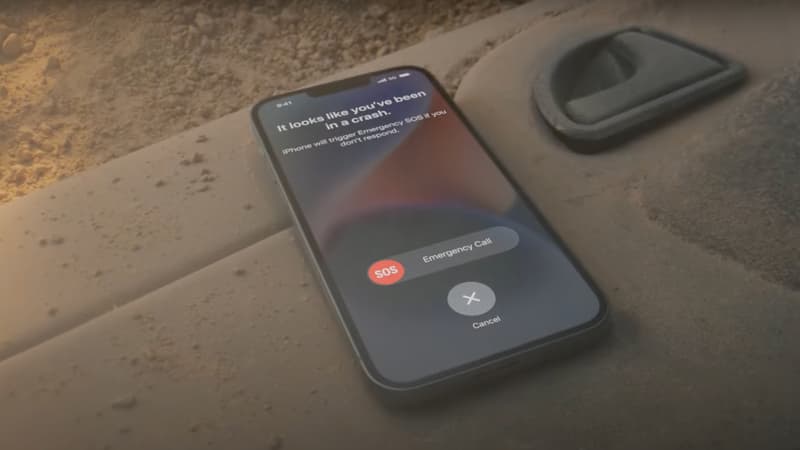The Apple Watch can save lives. This was the opening message of Apple’s keynote, on Wednesday, September 7 from the Steve Jobs Theater at Apple Park in Cupertino (California). In a lengthy video, Apple read letters from users of its smartwatch thanking the company for saving their lives or that of a loved one with its many features, from detecting heart fibrillation to calling for help in the event of a fall and loss of consciousness.
For several years, Apple has wanted to make its products, iPhone and Apple Watch in mind, allies of health in all its forms. And it can also take the form of a guardian angel ready to point out that you have a serious problem to consider.
Detect movements in the vehicle.
Thanks to its various sensors, including its gyroscope, Apple Watch is able to understand a fall and know, if you don’t react within minutes, to quickly notify a loved one on your emergency contact list or even bailing out. . Last year, bike fall detection was added to the features on the same principle.
This year, Apple introduced accident detection at its annual conference on September 7. Thanks to new and improved sensors in iPhone 14 as well as in Apple Watch Series 8, Apple Watch SE 2 and the new Apple Watch Ultra, these devices can understand that users boarded a vehicle that was injured.
How does it work? Pretty simple. All three connected watches have a new, more accurate accelerometer and a new, more efficient gyroscope. Thanks to a sensor fusion algorithm, the onboard barometer, GPS for route and speed, as well as microphones, which will pick up noises from the environment in the cabin, Apple is able to detect combinations of elements that signal a serious accident.
It also works with the iPhone’s barometer and GPS, as well as the microphone that picks up typical crash noises. An advanced motion detection algorithm is added to the elements that are taken into account to conclude a pile-up. Apple Watch and iPhone can also work together for even more accurate detection.
Motorcyclists not taken into account
The company has also relied on multiple lab crash tests and data collected during actual accidents (crashes, rollovers, etc.) with standard cars to design its feature to make it applicable to passengers in cars, SUVs or other trucks.
In the event of an accident, and without the user reacting within 10 seconds to indicate that everything is okay, the Apple Watch or iPhone will send a notification to the list of emergency contacts and call for help. Everyone will receive the location of the watch or phone. However, this new option will not work for motorcyclists whose movements are not accurately understood by the algorithm at the moment in the event of an impact (flying, hitting the ground, sliding, etc.).
Note that Apple also introduced its new Satellite Emergency Call feature during the conference. In case of no coverage by a cellular network or Wi-Fi, the iPhone can then, thanks to its antennas, connect to a satellite to send an emergency message. The smartphone will then be able to detect the position of a nearby satellite to get the best possible connection for your call.
Aware that this may take some time, iPhone then asks vital questions about the person who may be in distress to assess their condition and dispatch the appropriate help. A very useful innovation when hiking or in the middle of a desert, wild or wild area. But we will still have to wait to see it arrive in France. Launched next November and free for two years, the satellite emergency call will initially only affect the United States and Canada, before rolling out around the world over the following months.
Source: BFM TV


